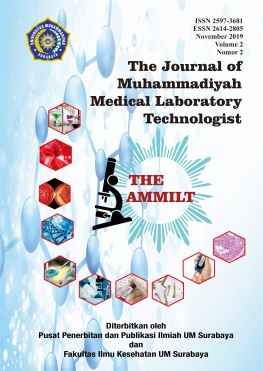Isi Artikel Utama
Abstrak
Abstract
Night shift can cause health problems one of which is the body's circadian rhythm disturbance which can lead to increased triglyceride levels and decreased levels of HDL (High Density Lipoprotein). This study to find out differences in triglyceride and HDL levels in pharmacist before and after night shift in Apotek Indobat Denpasar. This study method is pre-experimental one group pretest-posttest design. Blood collection was carried out on 28 pharmacists before and after the night shift. Triglyceride levels were measured using the GPO-PAP (Glycerol Peroxidase Phosphate Acid) method and HDL measured using the CHOD-PAP (Cholesterol Oxidase Diaminase Peroxidase Aminoantipyrine) method with a chemistry analyzer. The average triglyceride levels before the night shift were 87.05 ± 0.53 mg/dL, and levels after the night shift were 105.77 ± 0.50 mg/dL with a percentage increase in triglyceride levels was 24.66%. The average HDL levels before the night shift were 59.84 ± 0.47 mg/dL, and the levels after the night shift were 48.61 ± 0.42 mg/dL with a percentage decrease in HDL levels was 27.24%. Based on the results of the study, the night shift can increase triglyceride levels and decrease HDL levels.
Â
Keywords: chemistry analyzer, CHOD-PAP, HDL, GPO-PAP, pharmacist, triglycerides.
